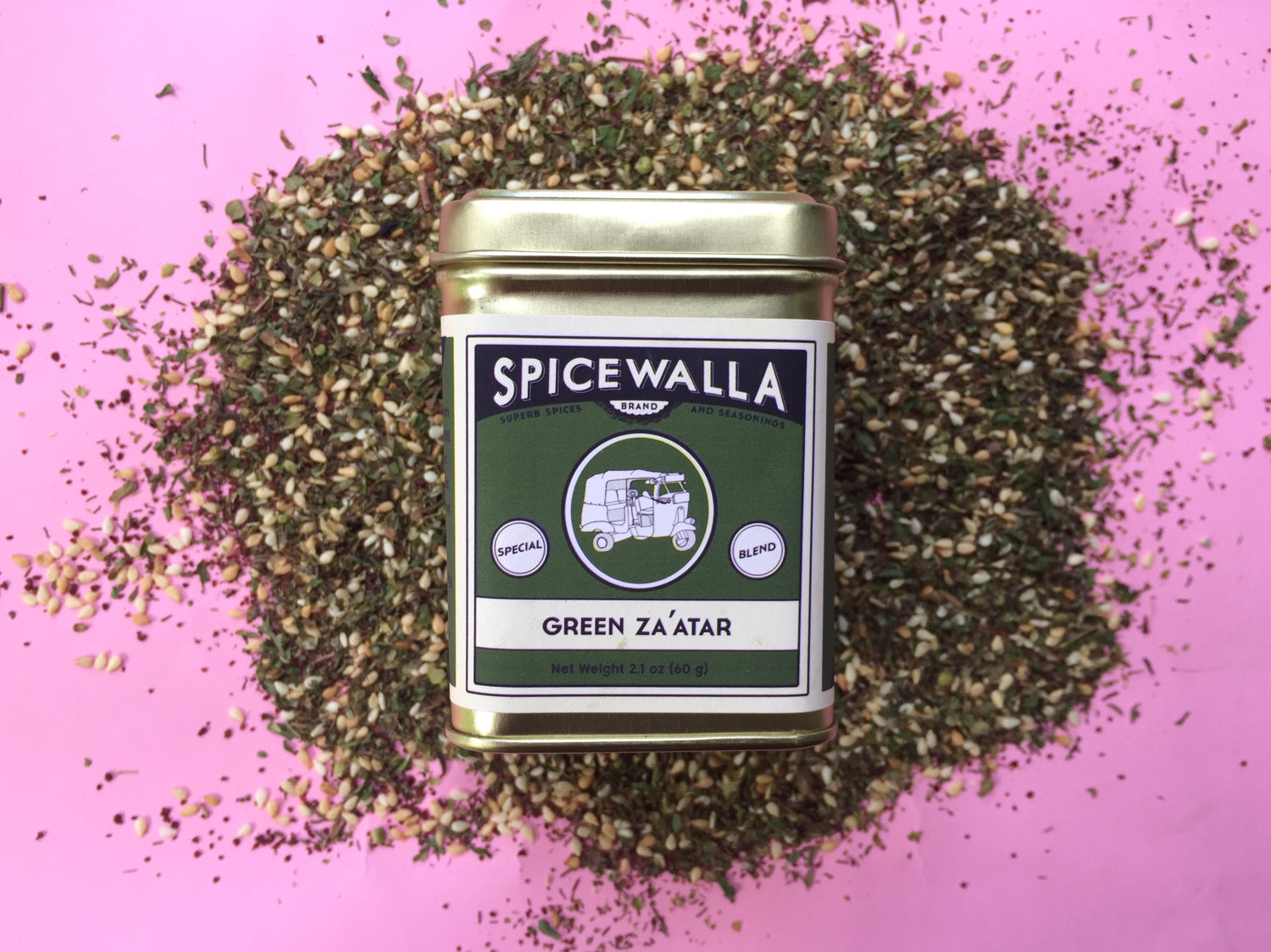SPICE ADVICE: GREEN ZA'ATAR
We've got a whole history lesson on Za’atar for ya today! This spice blend is a workhorse in the world of spice blends, and is THE quintessential spice mix of the Middle East. The blend’s origin story is hard to pin down, but we do know that the original recipe included an herb with the same name, Za’atar, and is a member of the mint family - often referred to as wild oregano.
While the latter Za’atar can be traced back to biblical times, the spice blend didn’t make its debut until around the 13th century. In 1977, after the Za’atar plant was named a protected species, harvesting times became quite limited due to fear of the plant's extinction, and so, as a substitute, the blend was created, generally made using herbs like oregano, thyme, and marjoram.
There’s no “traditional” recipe for Za’atar, however, there is a basic foundation of spices most Za’atar blends include: sumac, sesame, cumin, and herbs. The blend’s unique flavor is due in large to the sumac - a tart red fruit, which when dried and ground, lends to an earthy, tart, lemony taste. Adding ingredients like marjoram, parsley, and dill to the mix transforms the classic version into a similar blend we call Green Za’atar—an essential ingredient in most Israeli kitchens. Our Spicewalla Green Za’atar is a vibrant green, herbaceous, earthy blend of Thyme, Mediterranean Oregano, Sumac, White Sesame Seeds, Marjoram, Parsley, and Dill.
Similar to curry blends in India, many Middle Eastern families have their own unique, tried-and-true Za’atar recipes. Even with all the varying recipes, you will always find intricate levels of flavor in these blends, ranging from zesty and tart to floral and sweet. Both Za’atar and Green Za’atar are known for their complex levels of flavor and versatility. They’re easy add-ons to dishes like hummus or labneh (strained yogurt), but we’ve found them equally satisfying in pasta salads, tossed over roasted veggies, or mixed with olive oil to brush on pita or man'oushe (flatbread).
Looking for more Za’atar inspo? Check out our recipe for Green Za’atar Fattoush Salad or Green Za'atar Roasted Chicken.


